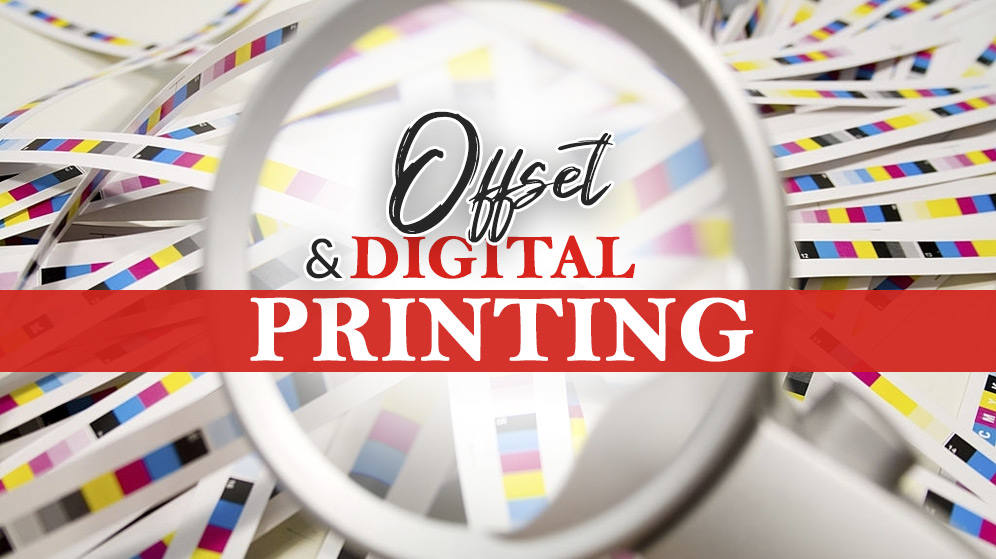What To Choose, Offset Or Digital Printing ?

In the offset printing press technique, ink is transferred from a plate to a rubber roller and then onto a surface. It is also referred as offset lithography. Due to its high-quality and low cost, it is massively used for custom printed packaging boxes, magazines, and other products. The reason why it is called offset is that this printing technique includes transferring an image from an aluminum plate to a rubber blanket and then onto the printing surface. Initially, it was known as lithography because the word lithography means “printed from stone”. The plates were made from limestone rather than expensive aluminum.
Modern Offset/Lithography Printing Press:
The role of printing in the manufacturing of custom packaging boxes is quite involved. It includes the conversion of files to CMYK and the finalization of color scheme & plates that will run on the printing press. Computer-to-plate systems can generate more convincing and higher quality results rather than computer-to-film. Moreover, it is way more economical than other types of printing techniques.
Well! You might get confused about whether to use digital printing or offset printing for your custom printed packaging boxes? First, we will see what is the difference between offset printing and digital printing to answer our ambiguity.
Difference Between Offset Printing and Digital Printing.
Offset Printing:
- It uses wet ink and printing plates.
- It takes a considerably long time because it includes several steps of setting up and the time to dry the final product.
- It is a more economical option for large orders and designs.
- It offers a much wider spectrum of ink colors.
Digital Printing:
- Whereas in digital printing, the resulting printing is directly copied from electronic files.
- It is very effective for short-run products, like a catalog, business cards, or posters, etc.
- Digital printing is limited when it comes to ink colors.
However, each printing process has its own core pros and cons that one must know about before opting for any one of them
The Pros & Cons of Offset Printing
Pros:
- It offers distinctive, clean, beautiful typography and images.
- It offers premium image quality.
- It offers more precision of rich and vivid visuals with spot-on colors.
- It is highly flexible and provides beautiful results on any kind of material
- It is extremely economical for a large volume of custom packaging boxes.
- It is practically infinitely scalable
Cons:
- You have to invest money in offset printing if you are not dealing with the manufacturers that offer free plates and die.
- It is time taking because special plates are created for specific design.
The Pros & Cons of Digital Printing
Pros:
- It makes sure that the printing pieces are identical to the next one.
- For low volume, the price per unit is cheaper.
- You can make instant changes while using digital printing.
Cons:
- Digital printing does not give precise results when it comes to spot-on color.
- Moreover, the material choice is also fewer.
- There are many limitations when it comes to digital printing.
What to Choose?
In a nutshell, offset printing takes time to create the plates and set up, etc., therefore it can’t be done at the last minute. Digital printing wins’ hands-down for last-minute work. On the other hand, larger print jobs are effectively done by using offset printing processes because offset printing is much more scalable in the long run.